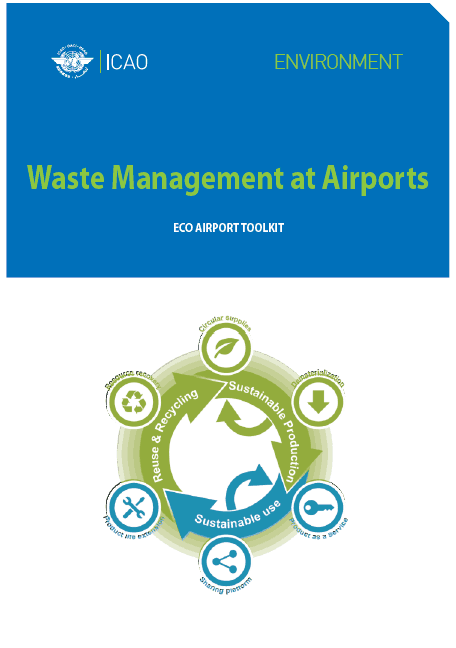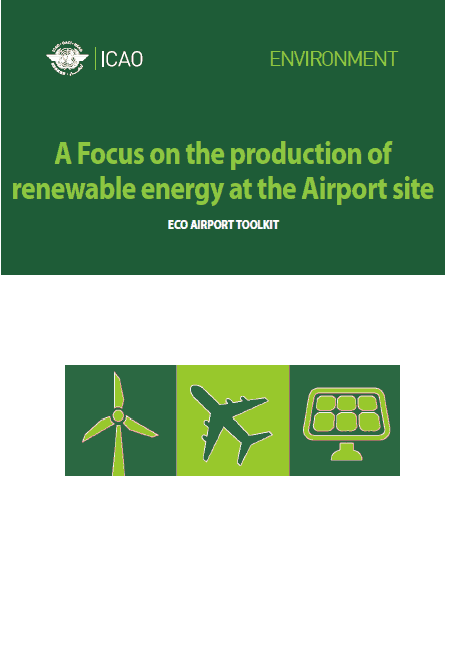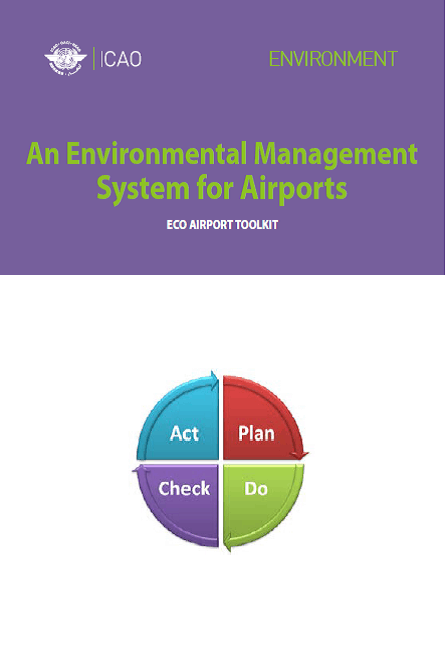In addition to celebrating of the United Nations’ World Environment Day on June 5th, the entire last week was dedicated to environmental discussions and deliberations in the 12 June 2019 session of the ICAO Council.

A message from Jane Hupe, the Deputy Director of Environment in the Air Transport Bureau at ICAO and the Secretary of the Committee on Aviation Environmental Protection (CAEP)
For those not as familiar with ICAO, the Organization has a permanent Council with 36 representatives of Member States who are elected at the ICAO General Assemblies that are held every three years. They represent the 193 ICAO Member States. Every year, Council holds three sessions with the Council Members, and last week their agenda focused on environmental items. We are currently in the midst of a Council session that has special significance, since it is the last one before our triennial Assembly. The 40th General Assembly will be held at ICAO Headquarters in Montreal from 24 September to 4 October 2019.
The Council deliberated on the recommendations arising from its Technical Committee on Aviation Environmental Protection (CAEP), and on the next triennium’s policies for aviation and environment for presentation at the ICAO Assembly. But that is not all. Apart from the busy Council session, other areas of the CORSIA work progressed. The Special Envoy for the 2019 Climate Summit, Ambassador Luis Alfonso de Alba, visited the Organization to discuss with senior management how ICAO could best contribute to the Summit outcomes. The Climate Summit takes place on 23 September 2019, just before the ICAO Assembly.
Let us start with the CAEP recommendations. I am happy to report that the Council has agreed with all the recommendations and asked the Secretary General to take the necessary action for their implementation. In many instances, particularly with global Standards and some CORSIA-related subjects, action involves consultations with all ICAO Member States on such recommendations. CAEP developed studies and proposals for global environmental goals, new global certification Standards, and publications containing guidance or best practices that support the mitigation or management of the effects of aviation on noise, local air quality and climate change.
These recommendations are the result of three years of the substantial work of more than 600 experts from States, the aviation industry (engine and aircraft manufacturers, airports, airlines, and air navigation service providers), environmental NGOs, and UN Organizations. Increasingly, we have included experts from outside aviation and academia as we expand to innovative areas that require expertise fields as diverse as agriculture practices, fuel production, and life cycle analysis. With the pace of emerging and innovative technologies for use in aviation, the number and range of stakeholders are expected to expand.
ICAO Global Environment Trends are developed to assess the effect of current and future aviation operations on the noise around airports, on air quality (NOx and PM), and on climate change (fuel burn and CO2) to 2050. Different from other organizations, we develop these trends in-house using peer-reviewed models that are offered to ICAO by Member States. Through this collaboration, we can provide States with a solid basis on which to take their policy decisions. Once approved, the trends are published in the ICAO Environmental Report and used as a reference in scientific and academic publications and assessments.
Another important decision involved the approval of ICAO mid- (2027) and long-term (2037) technical goals. Among other things, these goals provide insight into the possible environmental benefits that can be expected from future technology.
There were proposals for establishing new Standards and Recommended Practices (SARPs) and to update existing SARPs to certify aircraft and engines for noise and emissions in Annex 16, Volumes I, II, and III. Of note was the proposal for a new Standard for Non-volatile Particulate Matter (NvPM), which, starting in 2023, will limit the mass and number of NvPM emissions by encouraging the latest technologies into engine design, thereby minimizing the impact on human health. Following the Council’s agreement, the States will now be consulted on these proposals.


 In addition to the different Volumes of Annex 16 mentioned above and the respective guidance in the Environmental Technical Manuals, the ICAO Council agreed on the publication of many new documents (refer to the list below). Of note are the publications forming the Eco-airport toolkit e-collection. The concept behind the toolkit was to issue information to States on best practices available to them in a timely manner which is easy to understand, web-based, and free of charge. These documents were already issued under the “Eco Airport Toolkit”: waste management, environmental management system, and renewable energy production. The Council agreed on the addition of a new document “Eco-Design of Airport Buildings.” Council also agreed on future work on the development of new publications on water management at airports, green airport service access, and climate resilient airports.
In addition to the different Volumes of Annex 16 mentioned above and the respective guidance in the Environmental Technical Manuals, the ICAO Council agreed on the publication of many new documents (refer to the list below). Of note are the publications forming the Eco-airport toolkit e-collection. The concept behind the toolkit was to issue information to States on best practices available to them in a timely manner which is easy to understand, web-based, and free of charge. These documents were already issued under the “Eco Airport Toolkit”: waste management, environmental management system, and renewable energy production. The Council agreed on the addition of a new document “Eco-Design of Airport Buildings.” Council also agreed on future work on the development of new publications on water management at airports, green airport service access, and climate resilient airports.
In 2016, the ICAO Assembly adopted the Carbon Offsetting and Reduction Scheme for International Aviation (CORSIA) as the first-ever global market-based measure addressing emissions of a major sector. CORSIA is part of the broader package of mitigation measures that will enable international aviation to achieve ICAO’s aspirational goal of carbon-neutral growth from 2020 onwards. Important progress was made last year when CAEP developed the SARPs for CORSIA. Council adopted the SARPs in June 2018 that became applicable from January this year.
The CORSIA SARPs contain robust requirements for the monitoring reporting and verification (MRV) of international aviation CO2 emissions. All operators on international routes have already started collecting data. The CORSIA SARPS also make reference to documents that are essential for implementing CORSIA, such as those related to the CORSIA eligible fuels. The Council agreed that the proposed related documents be sent to States for comment. These documents outline processes and provide technical information that defines the parameters for the calculation of the environmental benefits of using such fuels on a life cycle basis for CORSIA compliance.
Other recommendations were related inter alia to the assessment of environmental benefits of operational measures, the development of States Action Plans, and the future work of the Committee.
While we will surely have an opportunity to address many of the issues mentioned in this column in more detail in upcoming weeks, all of the developments will be covered in the 2019 ICAO Environmental Report that will soon be published and available on the ICAO public website.
Another CORSIA implementation element reference in the CORSIA SARPs is the CERT – ICAO CORSIA CO2 Estimation and Reporting Tool – the 2018 version of the CERT is currently available on the web. Council approved the 2019 version, which adds features aimed at facilitating the reporting of fuel burn and CO2 emissions. The 2019 version of CERT will be posted and available for use by the end of July/August 2019.
As part of the continued implementation of CORSIA, the ICAO Council established the Technical Advisory Body (TAB) which is tasked with the assessment of the eligibility of emissions units from programmes (and potentially project types) for compliance with the offsetting requirements of CORSIA. The programmes (and potentially project types) will be assessed by TAB in light of the criteria, which were approved by the Council and are available on the CORSIA website. TAB has held its first meeting from 27 to 29 May 2019 and agreed on the TAB work programme and timeline. The TAB work programme is now publicly available on the website. The TAB also reviewed and agreed on the application form to be filled in by the programmes, which will allow the TAB to assess their eligibility for use in CORSIA. The Application Form will be published tomorrow, 13 June 2019, and the application period will last for approximately one month.
This is all very good news for CORSIA and for carbon markets, as we see clear and concrete steps being taken in ICAO that will provide more clarity on the eligibility of units for the offsetting of CO2 emissions in CORSIA.
Last but not least, as part of the preparations on environment-related issues for the next Assembly, the Council approved six documents, amongst which the proposals for the three Assembly resolutions that will permeate the work of the Organization in the upcoming triennium (2020 to 2022). The other documents covered the ICAO Global Environmental Trends and information on the steps taken to respond to the requests from the last Assembly and updates since then.
In reviewing all the accomplishments since the last Assembly, it is clear that the Organization has made significant progress in the environmental field and that the next Assembly will have good reasons to be proud of in celebrating its 75 years. Prior to the 40th Assembly Session, there will be an Innovation Fair where many environmentally friendly technologies for aviation will be on display. But this is the subject of our next column…..
Jane Hupe

New or updated ICAO documents that will be published in 2019:
- Summary of mid and long term technical goals (upcoming)
- New Eco-airport toolkit e-collection (web publication – upcoming)
- Eco-Design of Airport Buildings
- Aircraft end-of-life and recycling (web publication – upcoming)
- Climate adaptation synthesis (upcoming)
- Environmental community engagement for performance-based navigation (upcoming)
- Aviation noise impacts white paper (upcoming)
- ICAO Doc 9988 (third edition), Guidance on the Development of States’ Action Plans on CO2 Emissions Reduction Activities (upcoming)
- ICAO Doc 9889 – Airport Air Quality Manual (upcoming)
- Global air traffic management efficiency and the environmental impact of uncompensated traffic growth (web publication – upcoming)
